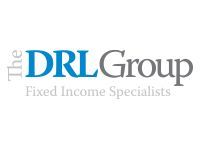
Municipal bond investors are increasingly focusing on K-12 school district debt as a confluence of market factors creates compelling opportunities ahead of a looming federal funding cliff. With September redemptions falling to nearly half of previous months’ levels and steady new issuance continuing, a supply-demand imbalance is emerging that could enhance yields across the school district curve.
The first week of September alone brought approximately $560 million in new K-12 school district issuance to market, highlighting sustained demand for educational infrastructure financing even as the sector navigates headwinds from declining enrollment and the upcoming expiration of federal COVID relief funds.
Federal Funding Cliff Drives Strategic Positioning
The approaching end of the School Emergency Relief Program at fiscal year-end 2026 is reshaping how investors view the credit quality of school districts. While Moody’s Investors Service moved its sector outlook to negative in December 2024, citing this federal funding phase-out among other concerns, bond strategists argue the market may be overlooking key support mechanisms.
“Approximately 87% of K-12 funding comes from state and local sources, not federal programs,” notes the latest analysis from Raymond James Fixed Income. “This provides fundamental stability regardless of federal policy changes, and median reserves are expected to remain above pre-pandemic levels even after the relief funding expires.”
The federal funding cliff coincides with broader demographic shifts affecting the sector. Declining enrollment is pressuring per-pupil funding formulas while rising operational costs strain district budgets. Additionally, school voucher programs in several states are creating enrollment competition that some analysts view as credit negative.
Credit Enhancement Programs Provide Backstop
Perhaps the most overlooked catalyst supporting school district bonds is the expansion of state credit enhancement programs. Twenty-five states now support municipal bonds issued by districts, providing an additional layer of security that lowers borrowing costs while reducing investor risk.
These programs proved their worth in a recent Pennsylvania transaction. The Methacton School District, rated Aa2 with state aid intercept program backing, successfully priced bonds with 5.0-5.25% coupons callable in 2032. The deal offered tax-exempt yields around 5.0%, translating to taxable equivalent yields of approximately 8.40% for investors in the top federal bracket subject to the Net Investment Income Tax.
“State enhancement programs are becoming increasingly important as federal support phases out,” said one municipal strategist. “They represent tangible government commitment to educational finance that goes beyond rhetoric.”
Yield Curve Positioning Favors Duration Extension
The current steep yield curve is particularly rewarding investors willing to extend duration in school district debt. The 10-20 year maturity range continues to offer what strategists call the “sweet spot,” while longer 20-30 year positions provide additional yield pickup of 50+ basis points without dramatically increasing volatility.
A 20-30 year portfolio of A-rated or better school district bonds currently yields approximately 4.80% tax-free, equivalent to roughly 8.10% on a taxable basis for high-bracket investors. Modified duration increases only marginally from 7.0 to 7.5 years when extending from intermediate to long-term positioning.
For context, a $1 million investment in school district bonds with an average 4.95% coupon generates $49,500 in annual federally tax-exempt income—compelling cash flow in today’s rate environment.
Credit Metrics Remain Resilient Despite Sector Concerns
While Moody’s sector outlook turned negative, actual credit performance tells a different story. Of nearly 3,300 school district issuers tracked by the rating agency, only 34 were under review and 36 held negative outlooks as of October 2024—representing roughly 2% of all issuers.
The median credit rating for U.S. public school districts stands firm at Aa3, with the majority carrying ratings of A1 or higher. This credit quality reflects several defensive characteristics: diversified revenue streams, essential service nature, and demonstrated community support through voter-approved tax measures.
“When voters approve bond measures, they’re essentially agreeing to tax increases to fund their schools,” explains one municipal analyst. “This grassroots backing creates security beyond traditional credit metrics.”
Supply Technical Support Near-Term Performance
Market technicals are increasingly supportive of school district bonds. September traditionally sees heavy redemption activity, but this year’s levels have fallen to nearly half of previous months. Combined with steady new issuance flows, this supply-demand shift could enhance yields across the curve.
The broader municipal market is also benefiting from favorable seasonal patterns. Historically, September through November represents strong performance periods for municipal bonds as supply moderates and institutional investors redeploy cash.
Large Deals Dominate
Beyond school districts, last week’s $7.5 billion municipal issuance calendar included several large transactions that could influence broader market tone. The Dormitory Authority of the State of New York led with a $2.3 billion general-purpose state personal income tax revenue bond deal rated Aa1/-/AA+.
The Massachusetts School Building Authority followed with a $1.9 billion transaction rated -/AA/AA+, while the Michigan State Housing Development Authority brought $360 million of rental housing revenue bonds rated -/AA+ to market.
These large transactions typically set pricing benchmarks that influence smaller issuers, including school districts, making this week’s calendar particularly important for sector performance.
Demographic Headwinds Create Selective Opportunities
While sector-wide challenges exist, demographic trends are creating selective opportunities within school district bonds. Fast-growing suburban districts with stable tax bases continue to offer premium credit quality, while some rural districts face genuine stress from enrollment declines.
State consolidation incentives are helping smaller districts achieve economies of scale, while enhancements to the governance framework are improving operational efficiency. These structural improvements may not prevent all credit deterioration, but they are helping limit downgrades to the most vulnerable issuers.
ESG Alignment Attracts Institutional Interest
The social impact component of school district bonds is attracting increasing institutional interest as ESG considerations influence investment decisions. Few municipal sectors offer such direct alignment between financial returns and community benefit.
“You’re literally funding classroom construction and technology upgrades that serve communities for decades,” notes one portfolio manager. “In an era where purpose-driven investing matters, school district bonds offer clear social impact alongside compelling returns.”
Outlook: Tactical Opportunities Amid Strategic Value
Looking ahead, school district bonds appear poised for selective outperformance, driven by improving supply-demand dynamics, state credit enhancement expansion, and attractive relative value compared to corporate alternatives.
The federal funding cliff represents a known challenge rather than an unknown risk, and most districts have already begun planning for the transition. State and local funding sources provide stability, while voter-approved tax increases demonstrate community commitment that extends beyond current fiscal pressures.
For investors seeking high-quality, tax-advantaged income with defensive characteristics, the current environment in school district bonds offers both tactical opportunities and strategic value. With tax-equivalent yields exceeding 8% for high-bracket investors and credit quality remaining broadly stable, the sector merits serious consideration as federal policy shifts reshape educational finance.
The key will be selectivity—focusing on districts with stable demographics, diversified tax bases, and strong state support while avoiding those most exposed to enrollment declines and fiscal stress. In this environment, quality matters more than ever, but quality is being rewarded with yields not seen in years.






